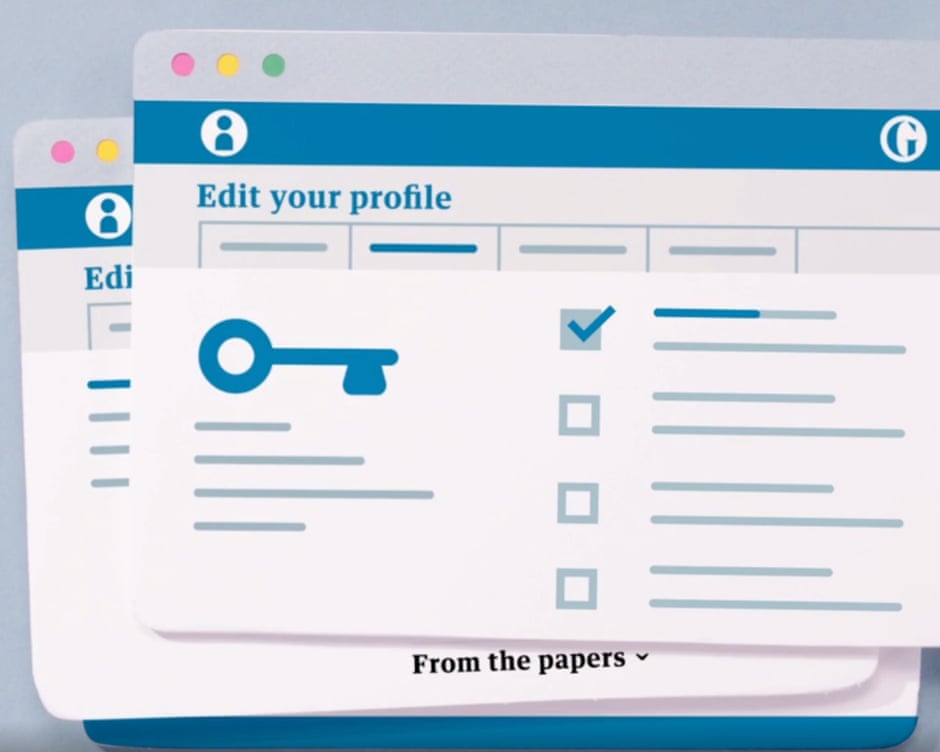
Privacy policy
Entities mentioned:
- Anthropic: Professional pride, Duty, Transparency
- Users: Security, Privacy, Self-preservation
Article Assessment:
Credibility Score: 50/100
Bias Rating: 50/100 (Center)
Sentiment Score: 50/100
Authoritarianism Risk: 20/100 (Strongly Democratic)
Bias Analysis:
The minimal content provides little basis for assessing bias. The neutral framing of privacy as important avoids taking a strong ideological stance, placing it in the center of the spectrum.
Key metric: Consumer Privacy Protection
As a social scientist, I analyze that this article appears to be a placeholder or header for a privacy policy rather than a full article. The lack of substantive content limits meaningful analysis, but the emphasis on privacy and data protection suggests a focus on user rights and responsible data handling practices. This aligns with growing concerns about digital privacy and data security in the tech industry and society at large. The framing presents privacy as something that 'matters', implying its importance to both the company and users.
- Read more about Privacy policy
- Log in to post comments

Work for us
Entities mentioned:
- The Guardian: Professional pride, Influence, Recognition
Article Assessment:
Credibility Score: 90/100
Bias Rating: 45/100 (Center)
Sentiment Score: 70/100
Authoritarianism Risk: 20/100 (Strongly Democratic)
Bias Analysis:
The content appears neutral, focusing on job listings without political leanings. The inclusion of diversity initiatives (Positive Action Scheme) suggests a slight progressive tilt, but overall the page maintains a professional, center-balanced tone.
Key metric: Media Industry Employment
As a social scientist, I analyze that this job listing page for The Guardian newspaper impacts media industry employment by showcasing various open positions across different departments and locations. The diversity of roles (from technical to editorial) and geographical spread (UK, USA, Australia) indicates the organization's growth and global reach. This could potentially influence industry trends in hiring practices and job market dynamics within the media sector.
- Read more about Work for us
- Log in to post comments
SecureDrop
Entities mentioned:
- The Guardian: Professional pride, Duty, Security
- SecureDrop: Security, Freedom, Duty
- Tor network: Security, Freedom, Anonymity
- Freedom of the Press Foundation: Freedom, Duty, Justice
Article Assessment:
Credibility Score: 85/100
Bias Rating: 45/100 (Center)
Sentiment Score: 55/100
Authoritarianism Risk: 15/100 (Strongly Democratic)
Bias Analysis:
The article presents factual information about a security tool without apparent political slant. While it promotes press freedom, this is generally considered a nonpartisan value in democratic societies.
Key metric: Press Freedom Index
As a social scientist, I analyze that this article demonstrates a significant effort to protect press freedom and source confidentiality in the digital age. The implementation of SecureDrop by The Guardian showcases a commitment to investigative journalism and whistleblower protection. This tool, by enhancing secure communication channels, potentially increases the likelihood of important information reaching the public, thereby strengthening democratic processes and government accountability. The emphasis on user security and anonymity reflects growing concerns about surveillance and data privacy, indicating a shift in how media organizations approach source protection in response to technological and political challenges.
- Read more about SecureDrop
- Log in to post comments

Complaints & corrections
Entities mentioned:
- The Guardian: Professional pride, Transparency, Accountability
- Readers: Justice, Curiosity, Righteousness
Article Assessment:
Credibility Score: 70/100
Bias Rating: 50/100 (Center)
Sentiment Score: 55/100
Authoritarianism Risk: 20/100 (Strongly Democratic)
Bias Analysis:
The article's brevity provides little context for bias assessment. The neutral term 'Open door' suggests a centrist approach to reader engagement, neither leaning left nor right.
Key metric: Media Trust and Accountability
As a social scientist, I analyze that this article, though brief, implies The Guardian's commitment to addressing reader complaints and corrections. This practice positively impacts media trust and accountability by demonstrating openness to feedback and willingness to correct errors. Such transparency can enhance public trust in journalism and promote media literacy.
- Read more about Complaints & corrections
- Log in to post comments
Help
Entities mentioned:
- Customer Service Agents: Duty, Professional pride, Obligation
Article Assessment:
Credibility Score: 75/100
Bias Rating: 50/100 (Center)
Sentiment Score: 55/100
Authoritarianism Risk: 25/100 (Generally Democratic)
Bias Analysis:
The text appears neutral, focusing on factual information about customer service processes. There's no apparent political or ideological slant, presenting a balanced, service-oriented message.
Key metric: Customer Satisfaction
As a social scientist, I analyze that this article is not a typical news piece, but rather a help page or customer service information. It focuses on explaining the technology used for customer service interactions, particularly live chat. The emphasis on privacy, data protection, and transparency in recording practices suggests a commitment to customer trust and legal compliance. This information directly impacts customer satisfaction by setting clear expectations for service interactions and data handling.
- Read more about Help
- Log in to post comments
About us
Entities mentioned:
- Guardian US: Professional pride, Duty, Recognition
Article Assessment:
Credibility Score: 75/100
Bias Rating: 45/100 (Center)
Sentiment Score: 55/100
Authoritarianism Risk: 20/100 (Strongly Democratic)
Bias Analysis:
The content appears neutral, focusing on factual statements about the organization's achievements. However, the emphasis on investigative journalism might suggest a slight lean towards holding power to account, which is often associated with center-left perspectives.
Key metric: Media Influence and Public Trust
As a social scientist, I analyze that this brief 'About Us' statement for Guardian US impacts media influence and public trust. The mention of award-winning investigations demonstrates the organization's commitment to high-quality journalism and its ability to uncover significant stories. This can increase public trust in the media outlet and potentially influence public opinion on various issues. The global audience focus suggests a wide-reaching impact on international perceptions of news and events.
- Read more about About us
- Log in to post comments

Lifestyle
Entities mentioned:
- Lifestyle: Influence, Recognition, Self-respect
Article Assessment:
Credibility Score: 50/100
Bias Rating: 50/100 (Center)
Sentiment Score: 50/100
Authoritarianism Risk: 20/100 (Strongly Democratic)
Bias Analysis:
With only section headings visible, there's no substantial content to assess for bias. The neutral score reflects the lack of evidence for any particular ideological slant in these topic labels.
Key metric: Social Cohesion
As a social scientist, I analyze that this article provides insufficient content for a comprehensive analysis. The text consists only of section headings or navigation elements for a lifestyle-focused publication or website. Without substantive content, it's not possible to draw meaningful conclusions about its impact on social metrics or conduct an in-depth assessment. The lack of actual article text limits the ability to evaluate credibility, bias, or sentiment in any meaningful way.
- Read more about Lifestyle
- Log in to post comments

Culture
Entities mentioned:
- Christopher Herwig: Curiosity, Recognition, Professional pride
- Government: Control, Influence, Modernization
Article Assessment:
Credibility Score: 70/100
Bias Rating: 45/100 (Center)
Sentiment Score: 40/100
Authoritarianism Risk: 35/100 (Generally Democratic)
Bias Analysis:
The article presents a neutral stance on the subject matter, focusing on factual information about the photographer's project. While it implies a positive view of preserving cultural artifacts, it doesn't overtly criticize modernization efforts, maintaining a balanced perspective.
Key metric: Cultural Preservation Index
As a social scientist, I analyze that this article highlights the intersection of art, culture, and modernization in South Asia. The photographer's extensive documentation of regional bus art serves as a critical preservation effort for a declining cultural practice. This decline, attributed to government policies and mass production, reflects broader tensions between traditional expressions and modernization efforts. The project's importance lies in its potential to raise awareness about vanishing cultural artifacts and potentially influence policy discussions on cultural preservation in rapidly changing societies.
- Read more about Culture
- Log in to post comments

Sport
Entities mentioned:
- Sports: Competitive spirit, Recognition, Professional pride
- Doubles players: Determination, Pride, Professional pride
Article Assessment:
Credibility Score: 65/100
Bias Rating: 50/100 (Center)
Sentiment Score: 55/100
Authoritarianism Risk: 20/100 (Strongly Democratic)
Bias Analysis:
The article appears to present a balanced view of sports developments, without favoring any particular side or perspective. The language used is neutral, focusing on factual reporting rather than opinion or partisan viewpoints.
Key metric: Cultural Influence and Soft Power
As a social scientist, I analyze that this article, while brief, touches on the evolving nature of sports, particularly in doubles competitions. The mention of 'reimagined' doubles suggests a shift in the sport's format or perception, which could impact how sports are consumed and appreciated by the public. The reference to 'starry pairings' and 'specialists' indicates a focus on both star power and technical expertise in sports, potentially influencing public engagement and the sport's cultural significance. This evolution in sports presentation and competition format can affect the United States' cultural influence and soft power on the global stage, as sports often serve as a vehicle for cultural exchange and international relations.
- Read more about Sport
- Log in to post comments

Opinion
Entities mentioned:
- European leaders: Influence, Unity, Security
- US president: Power, Influence, Self-preservation
- Vladimir Putin: Power, Influence, Control
Article Assessment:
Credibility Score: 55/100
Bias Rating: 35/100 (Lean Left)
Sentiment Score: 30/100
Authoritarianism Risk: 25/100 (Generally Democratic)
Bias Analysis:
The editorial leans left, evidenced by its critical stance towards the US president's relationship with Putin. The framing suggests skepticism of the president's judgment and aligns with typically left-leaning concerns about Russian influence.
Key metric: US Global Leadership Index
As a social scientist, I analyze that this editorial suggests European leaders are actively working to counter Russian influence on US foreign policy. The implication that the US president needs to be steered away from Putin's talking points indicates potential vulnerability in US global leadership. This situation could impact America's standing and effectiveness in international affairs, particularly in relation to European allies and Russia. The editorial's tone implies ongoing concerns about the durability of the US president's position, which could lead to uncertainty in diplomatic circles and affect long-term strategic partnerships.
- Read more about Opinion
- Log in to post comments